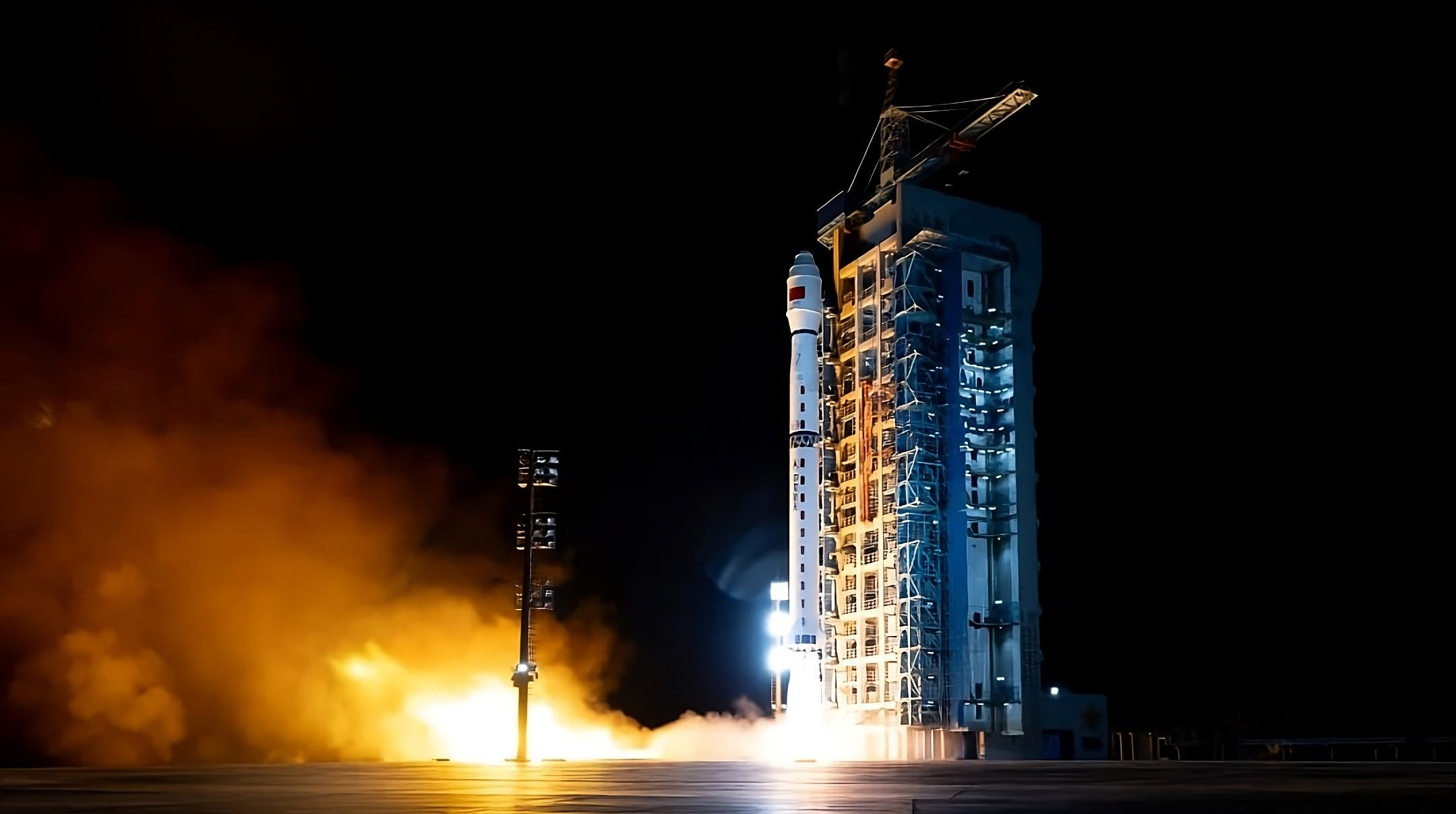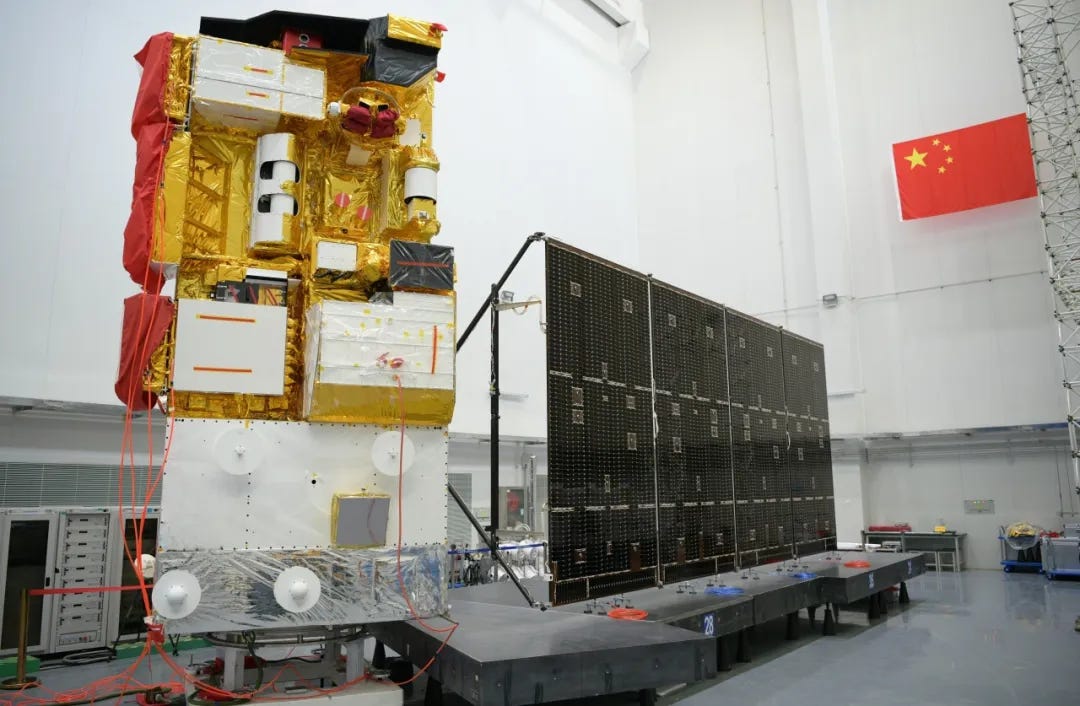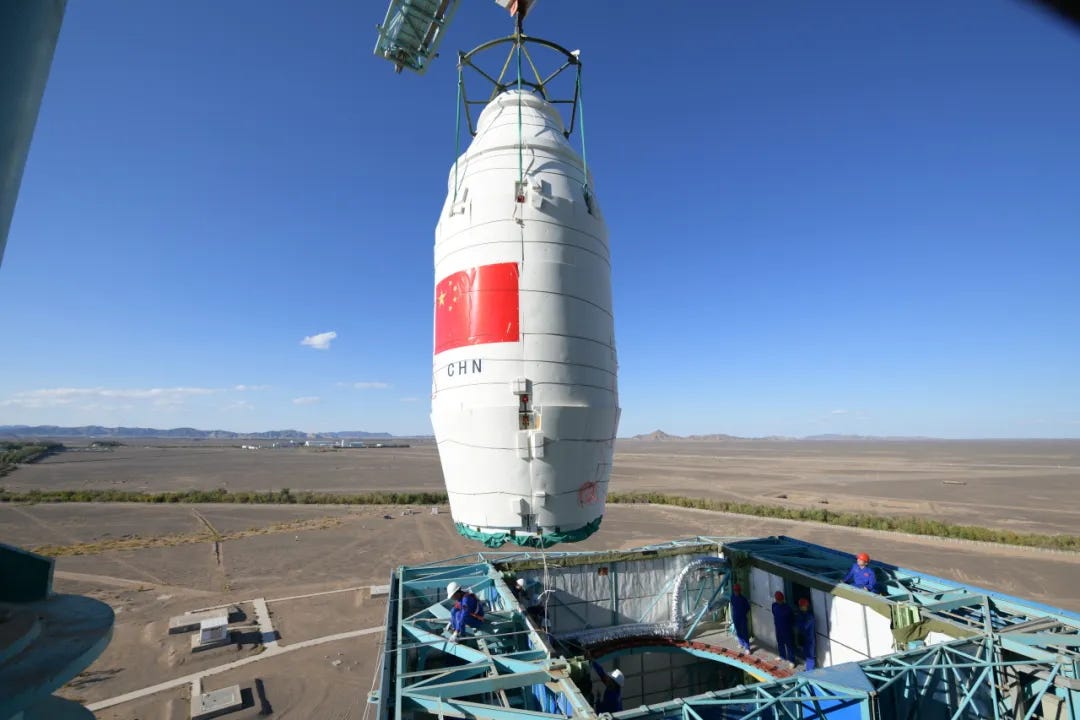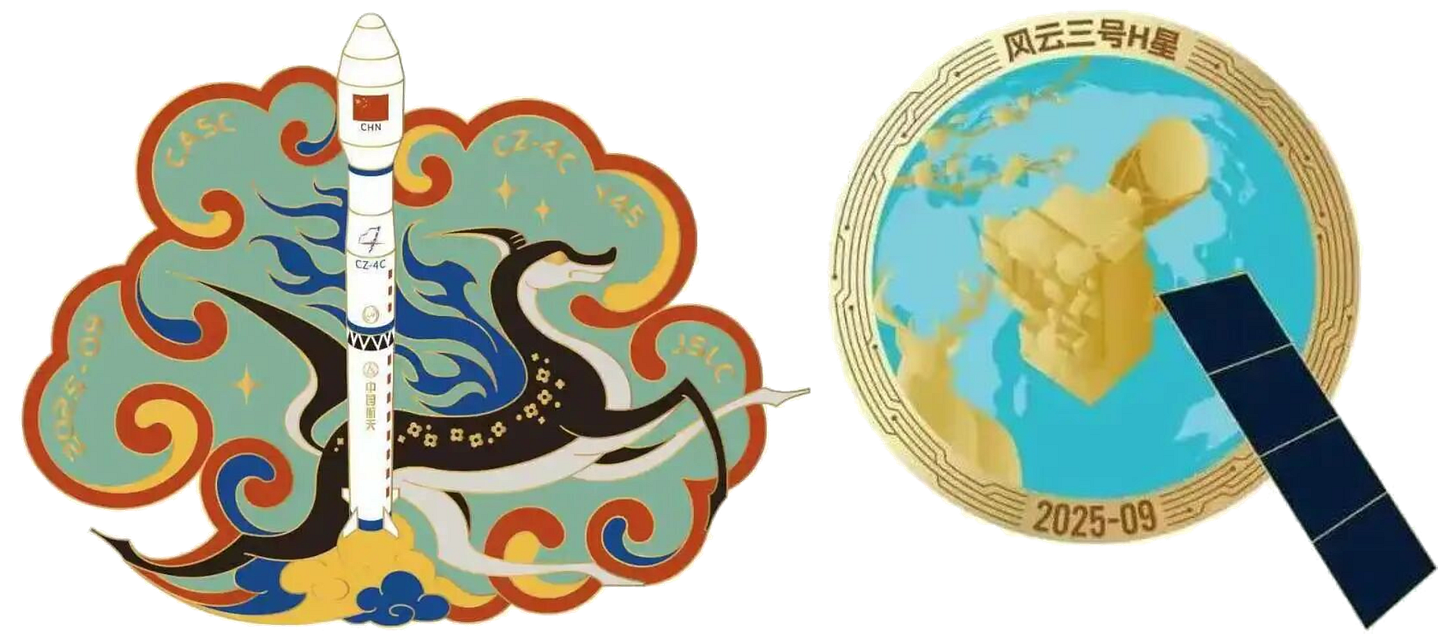Night Launch Delivers New Weather Spacecraft [Long March 4C Y45]
China's fleet of Fengyun satellites has had its latest addition launched.

Out of Launch Area 4 from the Jiuquan Satellite Launch Center at 03:28 China Standard Time on September 27th (19:28 Universal Coordinated Time on September 26th), a Long March 4C blasted off heading for polar orbit with a single payload.
Riding into orbit was the Fengyun-3H (风云三号H) weather satellite for China’s National Satellite Meteorological Center, adding to the Fengyun fleet of weather satellites, of which ten others remain in space across geostationary and sun-synchronous orbit. This addition to the fleet is expected to stay in orbit until at least 2033, with nine instruments hosted onboard:
MERSI-III: the main imaging instrument onboard with a resolution between 250-1000 meters in a 2800-kilometer swath, featuring enhancements in calibration accuracy, observation sensitivity, and operational lifetime.
HIRAS-II: a second-generation Hyperspectral Infrared Atmospheric Sounder with expanded thermal infrared bands, improved spatial resolution (of between 14 to 16 kilometers), doubled sensitivity, and enhanced calibration accuracy.
MWTS-II: a self-calibrating total-power passive microwave radiometer that scans Earth, measures radiation at over frequencies between 50-60GHz for temperature sounding, to provide all-weather temperature profiles for weather forecasting and climate monitoring.
MWHS-II: a microwave radiometer designed to observe global atmospheric thermodynamics, monitor severe weather systems like typhoons, and improve weather prediction through humidity and temperature field analysis.
MWRI-II: an enhanced microwave radiation imager with improvements in calibration accuracy, observation sensitivity, positioning accuracy, and operational lifetime.
GNOS-II: an instrument for integrated Global Navigation Satellite System occultation and reflection detection, featuring sea surface wind speed acquisition, BeiDou signal reception, and enhanced atmospheric sounding capabilities.
GAS-II: a greenhouse gas monitoring spectrometer with 100km swath width and wide-band high-spectrum resolution for global greenhouse gas observation.
IPM-II: an ionospheric photometer that observes far ultraviolet oxygen and nitrogen emissions to retrieve ionospheric total electrons, oxygen-nitrogen ratios, and precisely locate aurora boundaries.
WAI-II: a wide-field auroral imager for monitoring the density of settlement particles.
Those instruments, through their specializations, are planned to monitor and research activities in weather forecasting, atmospheric chemistry, and climate change. Fengyun-3H is also the 8th satellite in the Fengyun-3 series and the 22nd Fengyun spacecraft launched since deployments began in September 1988.

This launch mission had the fastest turnaround of Launch Area 4’s non-crewed launch pad, hosting a Long March 2C mission on September 16th, ten days before. According to the Shanghai Academy of Spaceflight Technology, multiple missions are preparing to use the launch pad, with parallel work underway to ensure they are ready to fly. Optimizations and extensive pre-planning with the Long March 4C’s integration process was said to have been implemented to guarantee a timely launch.
Today’s launch was the 58th mission for the Long March 4C, the 113th launch for the Long March 4 series, the 245th Long March vehicle launch from the Shanghai Academy of Spaceflight Technology, and the 596th launch of the Long March launch vehicle series. This was also the 58th launch from China in 2025.
Liftoff video via 大漠问天 and 中国的航天 on WeChat.
Check out the previous Long March 4C launch
Test Satellite Twin Launched From Xichang [Long March 4C Y64]
From Launch Complex 3 at the Xichang Satellite Launch Center, a Long March 4C blasted off at 16:55 pm China Standard Time (08:55 am Universal Coordinated Time) on August 17th, carrying a single satellite to low Earth orbit.
What is the Long March 4C?
This section is for those less familiar with China’s Long March series of launch vehicles.
The Long March 4C is another older generation low Earth and sun-synchronous orbit workhorse of the Shanghai Academy of Spaceflight Technology. All three stages of the rocket burn Dinitrogen Tetroxide and Unsymmetrical Dimethylhydrazine, with the third-stage capable of engine restart.
The payload capacity of the launch vehicle is currently as follows:
4,200 kilograms to low Earth orbit
2,800 kilograms to a sun-synchronous orbit
1,500 kilograms to a geostationary transfer orbit
The first-stage is powered by four YF-21C engines, which generate 302 tons of thrust, burning Dinitrogen Tetroxide and Unsymmetrical Dimethylhydrazine. The second-stage is powered by a single YF-22C engine and four YF-23C verniers that generate 80 tons of thrust while also burning Dinitrogen Tetroxide and Unsymmetrical Dimethylhydrazine. The third-stage is propelled by two YF-40A engines that provide 10 tons of thrust by once again burning Dinitrogen Tetroxide and Unsymmetrical Dimethylhydrazine.
On the launch pad, the Long March 4C is 45.9 meters tall and weighs 249,200 kilograms when fully fuelled. The first and second-stage have a diameter of 3.35 meters, while the third-stage has a diameter of 2.9 meters, and a fairing diameter of 3.8 meters.
So far, the Long March 4C has flown from all three inland launch sites, the Jiuquan Satellite Launch Center, the Taiyuan Satellite Launch Center, and the Xichang Satellite Launch Center.





![Test Satellite Twin Launched From Xichang [Long March 4C Y64]](https://substackcdn.com/image/fetch/$s_!qCv2!,w_1300,h_650,c_fill,f_auto,q_auto:good,fl_progressive:steep,g_auto/https%3A%2F%2Fsubstack-post-media.s3.amazonaws.com%2Fpublic%2Fimages%2F30a6d13d-7cdf-4a0c-90fd-38a902026cf7_1878x987.jpeg)